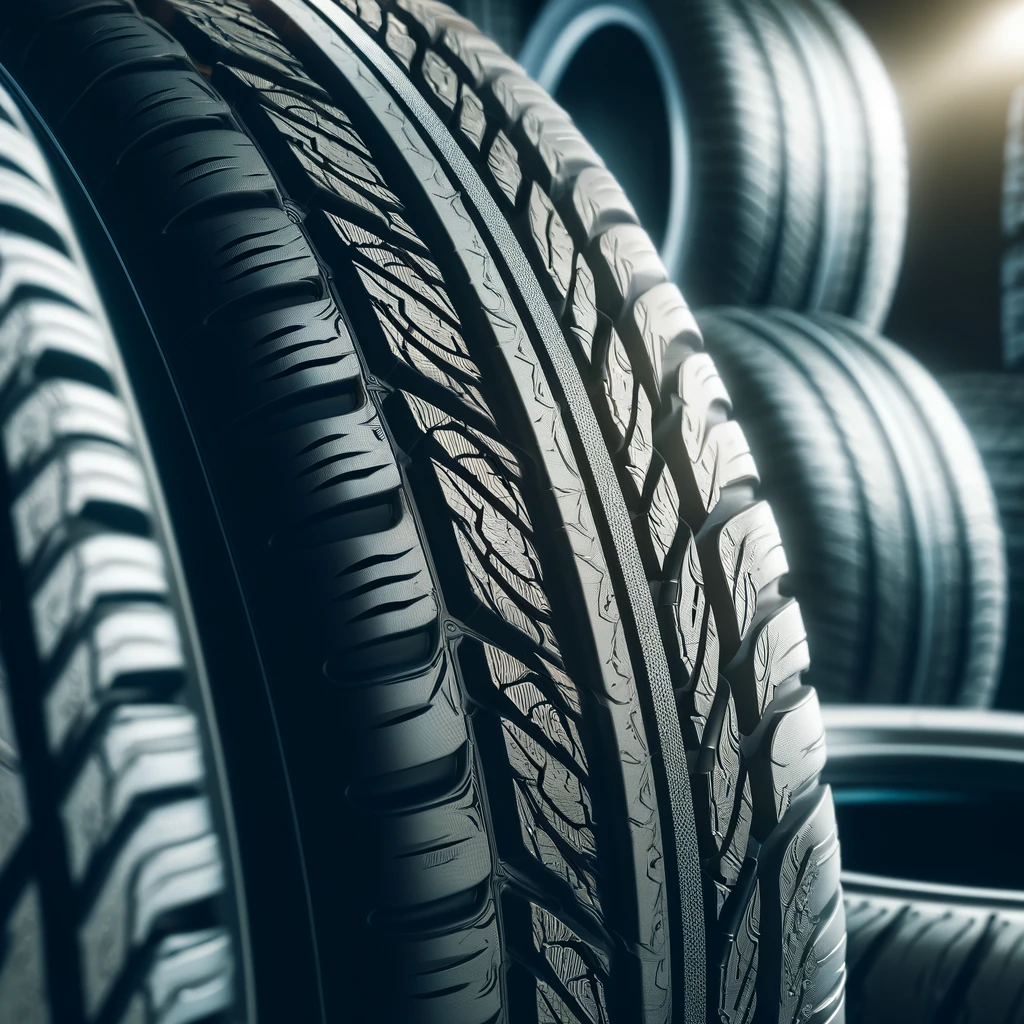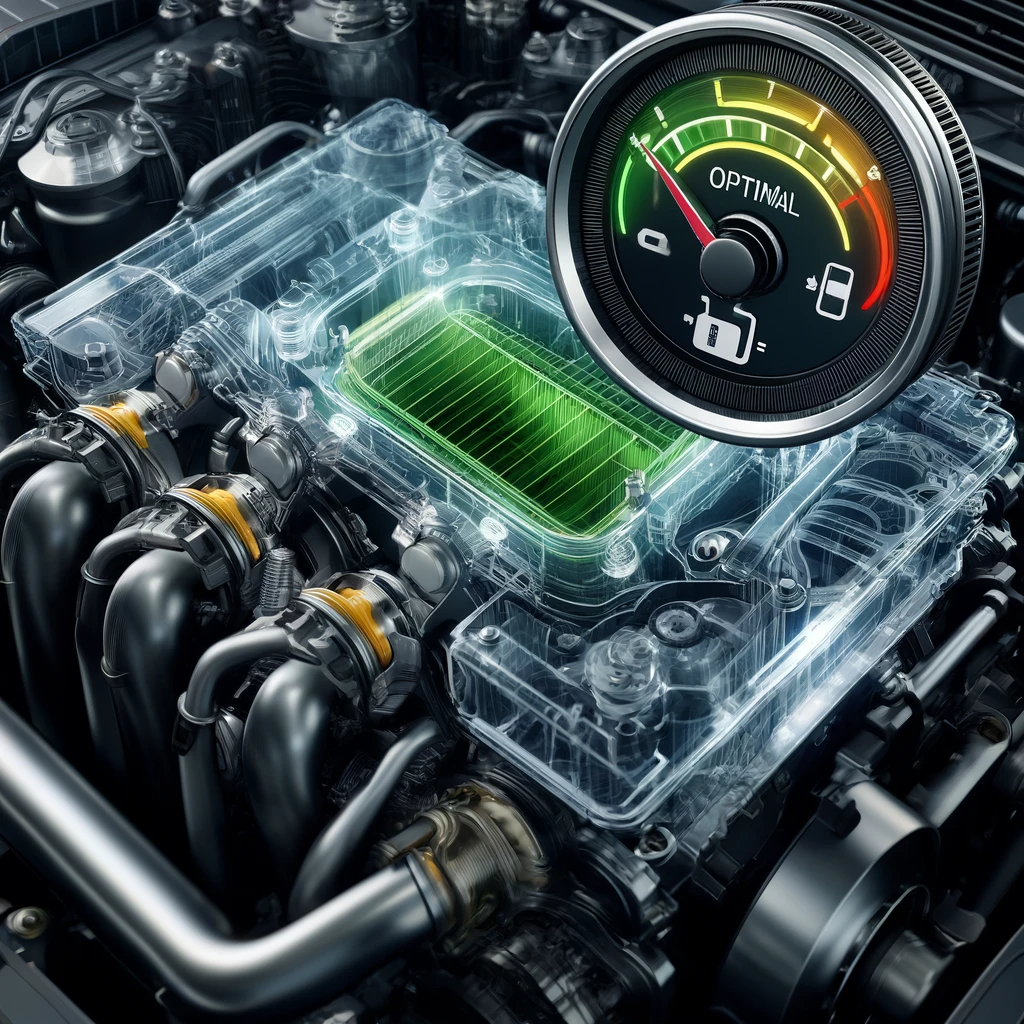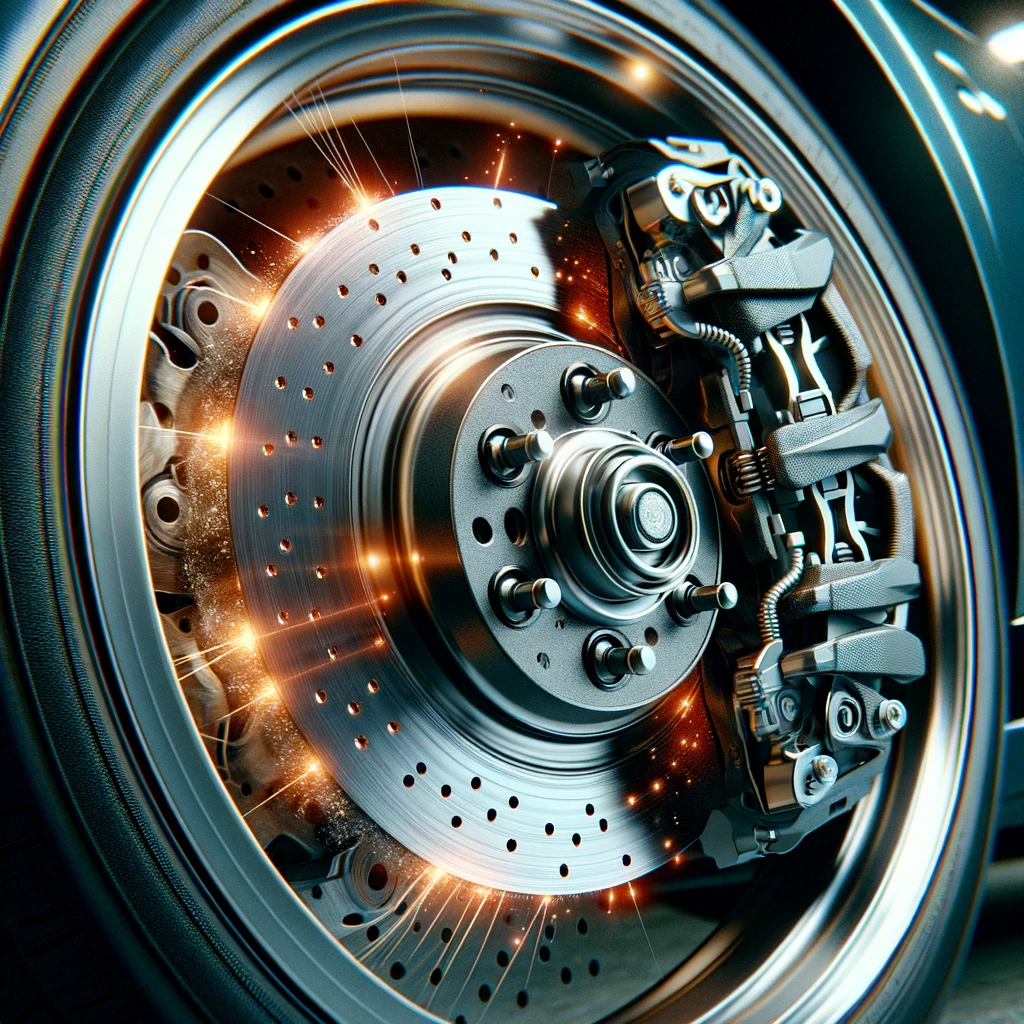The MOT test stands as a critical examination to ensure the safety and roadworthiness of vehicles in the UK, mandated by law for vehicles over three years old.
It scrutinises your vehicle to verify it meets the rigorous standards set for road use.
Preparation for the MOT can significantly reduce the likelihood of failure, saving car owners from costly repairs.
Successfully passing the MOT test not only certifies your vehicle's compliance with safety norms but also brings the owner peace of mind, knowing their car is fit for the roads.
1. Tyre Tread

The tread depth of your tyres plays an important role in ensuring your car's traction and braking performance.
UK law mandates a minimum tread depth of 1.6mm across the central three-quarters of the tyre and around its entire circumference.
Checking your tyre tread depth can be easily done with a tread depth gauge or by observing the built-in wear indicators.
Look out for uneven wear or damage, as these might point to suspension or alignment issues.
Replacing tyres that fall below the legal requirement is crucial not only for passing the MOT test but also for maintaining safe driving conditions.
2. Number Plates
Your car's number plates must adhere to specific legal standards, including correct size, font, spacing, and colour, to pass your test.
Ensuring your plates are correctly mounted and fully legible is essential.
Common failures include custom plates with incorrect character spacing and fonts that do not comply with regulations means meticulous attention ahead of your MOT test regarding number plates to pass without worry.
If you’re concerned about your plate, our Plate Builder has been designed to meet all the requirements you need.
3. Oil Levels

Maintaining the correct oil level is crucial for the lubrication and cooling of your car's engine.
To check your oil level, simply withdraw the dipstick, wipe it clean, reinsert it, and then pull it out again to see the oil mark.
The level should be between the minimum and maximum marks.
Regular oil changes are vital for the engine's health, preventing damage and ensuring longevity.
Address any oil leaks promptly to avoid negative impacts on your MOT test results and overall vehicle performance.
4. Lights
All your vehicle's lights are checked during the MOT test: headlights, tail lights, indicators, brake lights, and reverse lights, among others.
Ensure all lights are working correctly and replace any blown bulbs. Common reasons for failing include faulty bulbs, wiring issues, or damaged light casings.
Regular checks and timely bulb replacements can prevent last-minute surprises and contribute significantly to passing.
5. Windscreen Wipers

Effective windscreen wipers are necessary to maintain visibility during adverse weather conditions.
Inspect your wipers for signs of wear or damage, and test them to ensure they clear the windscreen effectively without leaving streaks or gaps.
Wiper blades that are torn or deteriorate can cause an MOT failure, so replacing them beforehand is a wise decision.
6. Bodywork
The MOT test examines a vehicle's bodywork for significant damage, corrosion, or sharp edges that could pose a risk to road users.
Check your vehicle for rust spots, dents, and scratches that may compromise its structural integrity.
Addressing these issues not only helps in passing but also preserves your vehicle's appearance and resale value.
7. Horn

A functioning horn is required for the MOT test, serving as a crucial safety feature to alert other road users.
Test your horn regularly to ensure it works correctly and is of adequate volume.
If it's not functioning, check for electrical issues or consider replacing the horn before your test date.
8. Seatbelts
Inspect all seatbelts to ensure they fasten securely and retract smoothly, without fraying or damage.
The MOT test will fail vehicles with defective seatbelts, as they are essential for passenger safety.
Address any issues with seatbelt mechanisms or replace damaged belts to meet the set standards.
9. Brakes

The braking system of your vehicle stands as a critical element under scrutiny during the examination, a testament to its vital role in ensuring your safety on the road.
It is important to ensure that your brake pads are well above the minimum thickness required, that the brake pedal presents a firm resistance when pressed, and that the vehicle maintains a straight line without veering to one side during braking.
Addressing any discrepancies in brake performance or the integrity of its components is not just essential for passing your test but is also paramount for safe driving practices.
Regular checks and timely maintenance of the braking system can significantly mitigate the risks of accidents, safeguarding not only your well-being but also that of other road users.
10. Previous MOT Certificates
Reviewing your previous MOT certificates can provide insights into recurring issues or items that barely passed in the past, and might need attention.
Keeping a complete history of MOT results helps in maintaining your vehicle efficiently and ensures readiness for the examination.
Preparing thoroughly by following these MOT tips can significantly increase the chances of your vehicle passing.
Remember, ensuring your vehicle meets MOT standards is not just about compliance.
It's about safety and peace of mind on the road.
If you want further assistance related to your car’s number plates ahead of your MOT test, feel free to contact us and we’ll be happy to help.
